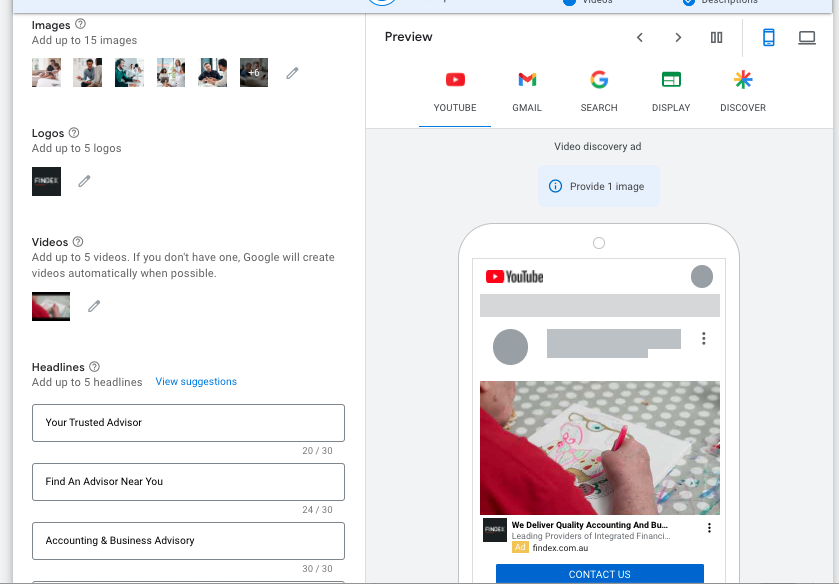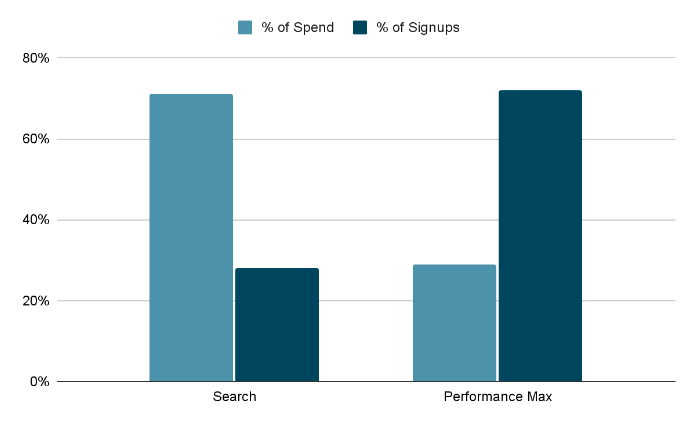Google’s Performance Max Campaigns: How Tuff Clients Are Using It
As a growth agency, we continually test the new automated campaign types that Google rolls out each year, while making constant updates and improvements along the way. The newest addition to this catalog is Performance Max Campaigns.
Performance Max was first introduced as a new way to buy Google ads across multiple channels in the ad platform, utilizing conversion data and machine learning to run almost entirely autonomously.
Since its launch, Google has announced that Smart Shopping campaigns along with Local Service Ads, will soon be replaced entirely by this new Performance Max campaign type. This is just one of many reasons why making a switch over to the latest form of automation is worth the time and effort.
Let’s dive head first into everything we know about Performance Max campaigns and how Tuff successfully utilizes them across a variety of industries for our partners.
A Deep Dive On Google’s Performance Max Campaigns
One of the first questions surrounding this new campaign type that comes to mind for many of our partners, is “Where do these ads serve?” The short answer is, everywhere.
When we create a new Performance Max campaign, Google will combine our assets to serve relevant ads across Youtube, Display, Shopping, Discovery, Gmail, and other Search Partners. With such a large mix of available channels, these campaigns can check off multiple business goals all at once. Display and Gmail placements, for example, can help satisfy Brand Awareness goals, focusing on impressions and reach. Shopping, on the other hand, is focused more on direct sales, executing on your conversion KPIs.
No matter the industry you serve, Performance Max campaigns are a great way for you to easily diversify your marketing mix while taking advantage of Google’s best algorithms.
Understanding what these ads are exactly, and how we target users, is the next step in successfully utilizing this new campaign type.
Asset Groups & Targeting Options
Where other automated campaign types, both in and outside of Google, utilize ad groups to break up the contents of a campaign, Google Performance Max campaigns use Asset Groups. These asset groups include a variety of different forms of creative: headlines, descriptions, images, logos, shopping feeds, and videos. All of these different assets are used in different ways depending on the network Google serves the ad on. Discovery ads will rely heavily on Images. Gmail, for example, will focus much more on Ad Copy.
Targeting With Audience Signals
Google’s Performance Max campaigns don’t have the usual keyword targeting techniques that advertisers are used to for PPC efforts. Targeting is mostly done automatically based on your website, unless you use the new feature called Audience Signals. You do not need to upload an Audience Signal, but it is a best practice and we have found it useful for creating a successful campaign. Here’s how it works.
Along with your assets, you can upload different audiences to your campaigns. This can include a remarketing list or any custom segment you create. These audiences will act as a starting point for Google to start optimizing towards. Ads will not serve only to these users, instead, the campaign will use data from these audiences to determine broadly those who will most likely convert, using that information to look for new people with similar or stronger intent.
Google will use this library of assets that you upload to match the advertiser with a target audience at multiple touch points in multiple mediums, with every conversion adding more data for Google’s computers to parse through.
Supplementing Smart Shopping Ads With Cleary Bikes
One big area that Performance Max excels with is through the Shopping Network. Cleary Bikes is a high quality kid’s bicycle brand that is focusing on scaling sales while decreasing their CPA. With an abundance of creative assets to utilize, Performance Max was a perfect opportunity to showcase Cleary’s highly visual eCommerce brand.
Since starting a Performance Max campaign earlier this year, we were able to out pace our Shopping campaign while improving across all relevant KPIs. Compared with our previous Smart Shopping campaign:
- Spend increased 280%
- Conversions increased 407%
- Cost/Conv decreased 24%
- CTR increased 125%
- Clicks increased 242%
These kinds of results speak for themselves. Not only were we able to find this success to take over what our Shopping campaign was giving us, but we were able to branch off into new channels that boosted our overall performance.
Using Performance Max for Lead Generation
For our partner Findex, an Australian company that specializes in financial services, Google’s Performance Max campaigns have been a powerful tool to bring in qualified leads with incredible efficiency. After 30 days, the results are astounding.
While incorporating this new campaign, we were able to spend an additional 62% month over month. This not only brought in a large increase of overall traffic, 245% increase to be exact, but the traffic was high quality, spending more time on the site than ever before. This isn’t the only time on site metric that saw drastic improvement either. Bounce Rate decreased by 70% while Pages/Session increased another 25%.
These metrics on their own would be enough to determine a successful campaign, but the wins don’t stop there. Month over month, comparing a period without a Performance Max campaign versus a period with one, leads jumped up a staggering 125%. More users were coming to the site, staying longer, leaving less often, and converting exceptionally. The cherry on top? CPCs were down 50% on average. What more could we ask for?
Using Performance Max to Drive Signups
Another one of Tuff’s fintech partners developed a platform that allows investors to follow and communicate with other like minded investors with the goal of scaling their user base.
Because search volume for such a niche offering is low, we had to explore other ways to reach the target audience outside of search. In this highly competitive industry, bidding on stock, investment, and trading keywords will find you competing with direct investment platforms, banks, and other financial-adjacent organizations.
With this increased competition we were able to drive account creations via paid search, but the cost/signup was far higher than anticipated and was not sustainable. In comes a Performance Max test, leveraging an audience signal of Google’s affinity audience “Avid Investors” along with some demographic restrictions to hone in on our audience.
In the first month, this Performance Max campaign drove signup costs down 80% compared to our Search campaigns. As time went on and machine learning had more data at its disposal, the next month, cost per signup dipped in half. Performance Max allowed us to leverage broad targeting options to drive more engaged users to the platform at a fraction of the price.
Leaning Into Automation
Automation isn’t going anywhere anytime soon. It’ll just get more and more powerful as the years go by which makes embracing it early on, testing and learning from performance, a vital part of a marketing strategy. Tuff’s results are proof that utilizing these new forms of technology in an overall marketing mix can yield great successes.
Looking for a strategic partner to test new campaign types for your organization? Let’s talk!

Chris is a PPC Strategist based in Nashville, Tennessee. When he’s not scaling Google Ads & YouTube campaigns, he enjoys longboarding, tinkering with automation tools, and a little bit of gaming.








